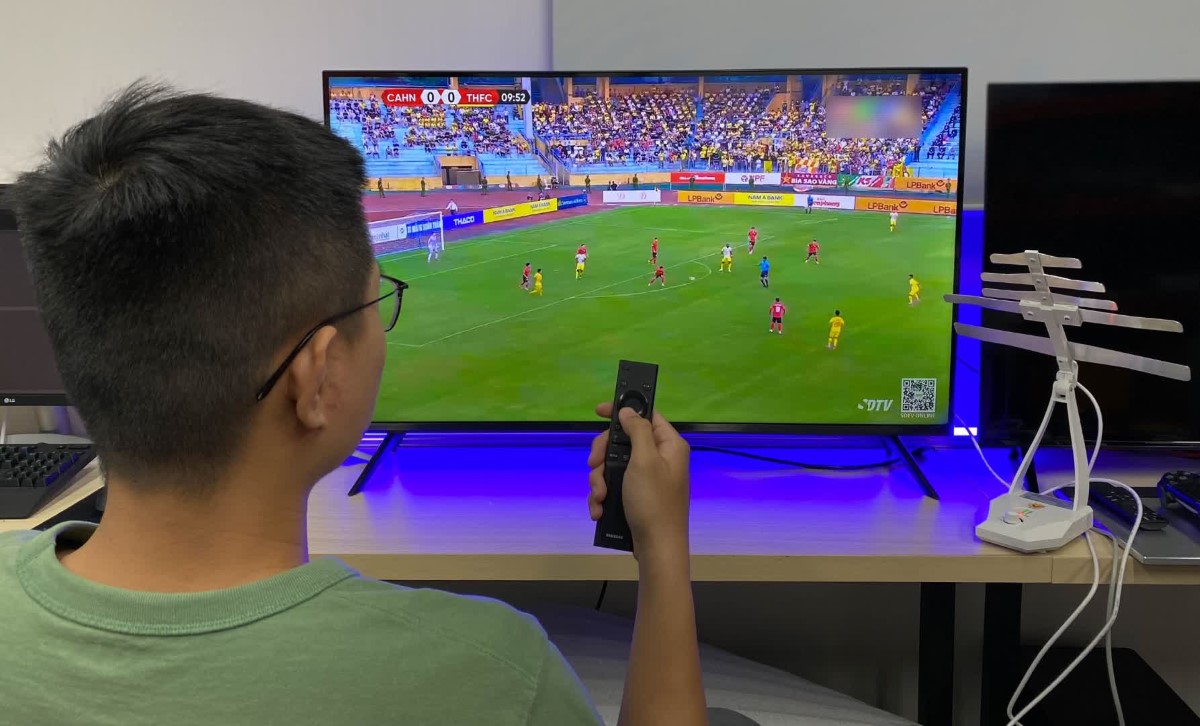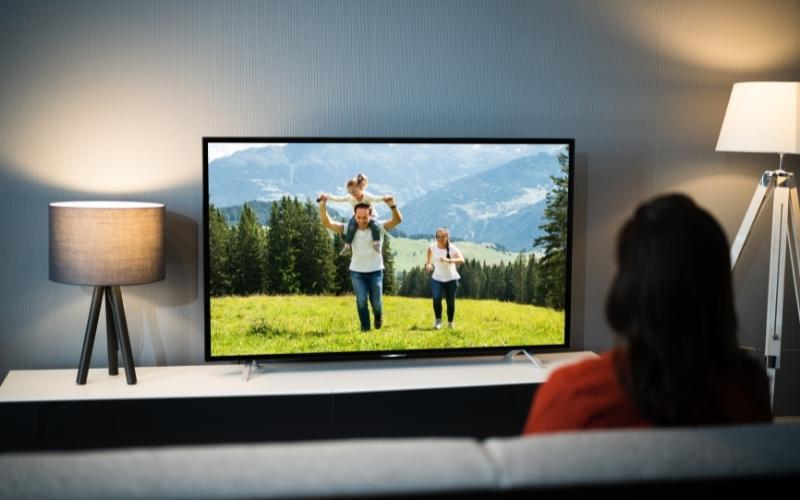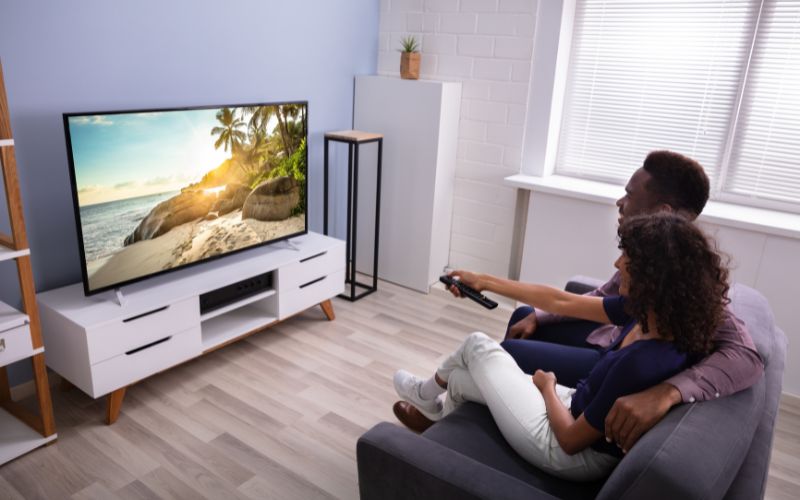60Hz vs. 120Hz TVs For Sports Enthusiasts


What To Know
- A higher refresh rate typically offers smoother motion, but the optimal rate can depend on the content being viewed.
- 120Hz refresh rate is excellent for fast-paced sports like basketball or American football, but not all sports benefit from it. For instance, watching slower-paced sports like golf on 120Hz may not offer any significant advantage over 60Hz.
Do you want to experiment? Let’s watch our favorite sport at 60hz, and the next day we’ll watch it at 120hz to see which one is better.
How about it? Regardless of which one is better, both have differences we should discuss.
The reality of the situation is that watching sports at either 60Hz or 120Hz highly depends on the type of sports you’re trying to watch.
Nevertheless, we should explain. So, keep reading to learn more about 60hz vs. 120hz for watching sports.
Quick Navigation
What is Refresh Rate?
Before we get into the nitty-gritty, let’s clearly define what this all means. Refresh rate refers to the number of times the screen is refreshing per second.
Let’s see how it applies to 60Hz and 120Hz.
What is 60Hz?
A refresh rate of 60Hz means your screen is refreshing itself 60 times per second.
The purpose of refresh rate is to smooth a video’s motion, also referred to as motion handling. Motion handling is a fancy term for inserting and repeating frames within the originally recorded frames of the video.
Technically, the higher the refresh rate, the smoother the motion of the image you are watching. However, it’s important to note that that’s not always the case.

What is 120Hz?
Now that we understand refresh rate, let’s discuss 120Hz.
120Hz means your TV refreshes itself 120 times per second. That’s twice as many refreshes as 60Hz.
This is great for latency because the faster your screen refreshes, the lower the latency. It is, therefore, great for video games and sports.
When it comes to sports, the refresh rate can keep up with the fast-paced, action-packed nature of the movement. Therefore watching sports on a TV with 120Hz is best.
Another advantage of buying a display with 120Hz is that it can play video recorded at many frame rates (such as 30Hz, 60Hz, and 120Hz) without issues.
So, how is refresh rate used within your TV? Let’s discuss that below.
Use cases
Usually, the higher the refresh rate, the better it is for fast-paced viewing. It means the TV is able to keep up with the action and newer images on the screen.
So if we take this into account, we can decipher that doing certain things, like playing video games and watching sports, is better at 120Hz.

However, as a side note, not all sports are better at 120Hz. That’s because not all sports are super fast-paced and action-packed. So if you think watching golf at 120Hz is a good idea, it’s probably not.
To take advantage of the refresh rate and low latency, watch American football using 120Hz. That’s where you can benefit the most.
A fail-safe of using 120Hz is to ensure you pair a source that supports 120FPS natively. For example, if you’re playing a 4K video game, chances are it supports 120FPS.
That’s because, anything less than that, your TV needs to match the refresh rate and frame rate by inserting images in between the actual footage. Many times this results in judder.
How do they work?
So how does refresh rate work when watching something like sports?
Well, let’s back up a little bit.
Most movies and shows on TV are usually recorded at 24FPS which also matches at 24Hz. Therefore, when you turn on your TV and watch it, your TV needs to match it and process the video—a process known as upscaling.
The great thing about getting a TV with a 120Hz option is that 120Hz processes video better than most. So if you’re watching something recorded at 24FPS, chances are it will look great.
TVs with only 60Hz, while they do a good job, sometimes it’s not the best at processing and interpolating (or upscaling) a video recorded at lower refresh rates.

Incorrectly processing a 24FPS video will result in lots of judder, and well, who wants to watch a game that’s full of judder?
But, many modern TVs and 4K TVs come with 120Hz as an option.
However, as of now, most content looks good at 60Hz. And even watching 60Hz content on a 120Hz TV looks about the same as watching it on a 60Hz TV.
Although, one of the biggest advantages of a 120Hz refresh rate is watching natively recorded 24FPS material on it (like DVDs and Blu-rays.)
We can do the math if we think about it for a second and compare it to 60Hz vs. 120Hz.
For instance, a source of 24 frames per second on a 60Hz TV needs to alternate between creating three and then two frames per second in between these 24 frames to produce a smooth image. Alternating like that causes the user to experience what is known as judder. It just doesn’t look as smooth.
If you think about it in terms of multiples, 24FPS looks bad on a 60Hz TV because 60 is not a multiple of 24.
However, pairing a source with 24FPS with a 120Hz TV, your TV creates five frames between each frame each time. It makes for a better and smoother experience. Since 120 is a multiple of 24, it works better.
On the plus side, some 60Hz TVs can now change their refresh rate automatically if they detect 24FPS content. These TVs can change to either 48Hz or 72Hz for a smoother experience.
Comparison Table
| Pros | Cons | |
| 60Hz |
|
|
| 120Hz |
|
|
Conclusion

While we learned a lot about refresh rate and how to best use it, the main question remains which is better for watching sports, 60Hz vs. 120Hz TVs?
Well, as we learned, it really depends on what type of sports you’re watching. 120Hz is for fast-paced, action-packed sports.
So, watching golf on a TV with 60Hz is probably a good idea. However, it’s not a good idea to watch it on a TV with 120Hz.
On the flip side, basketball or American football is best viewed at 120Hz TV because it can keep up with all the movement and fast-paced action happening on screen.
How did your experiment go? Did you enjoy watching your favorite sport on 60Hz or 120Hz better?
Let us know in the comments.
James Quintanilla is a technical copywriter. Although his experience allows him to write on many topics, he loves to focus on tech and travel. As a freelancer, James has worked on projects with Pointer Clicker, Lonely Planet, and the Travel Channel. When he’s not writing or planning his next adventure, he’s watching a scary movie.


120hz is ALWAYS better
Also a 120hz tv can display content in 60hz too but not the other way around